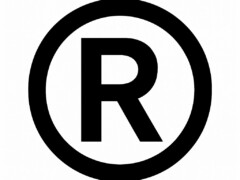Believe it or not, that eye-catching and artful product label may be the greatest risk to a food business. A labeling error can lead to serious consequences, including FDA Warning Letters, product recalls, or class action lawsuits initiated by plaintiff’s attorneys. No product is ready for market until it has undergone a thorough FDA food label compliance review. The Food Law Firm completes label review consultations within 2–3 business days for a flat fee.
Contact Us
The Importance of FDA Food Label Compliance
Label review entails a comprehensive check of your product and its ingredients to ensure it complies with federal labeling laws. The FDA, the USDA, or the TTB all play a role in regulating and policing product labels. Getting it wrong exposes food manufacturers to a range of risks:
- A food product is considered misbranded if it contains a labeling error.
- Labeling errors or misbranded foods can subject manufacturers to adverse administrative action such as voluntary or mandatory recall, administrative detention, or they may receive an official Warning Letter and demand for corrective action by regulators.
- Class action sharks are constantly on patrol for errors that create five- and six-figure headaches for Marketers.
FDA Food Label Compliance Checklist
A comprehensive label review begins with verifying the structural fundamentals required by FDA regulations. Each label must include the statement of identity, net quantity of contents, ingredient list, allergen disclosure, name and place of business, and Nutrition Facts Panel, all positioned in accordance with federal layout requirements. Font sizes, typeface prominence, and placement zones—such as the Principal Display Panel and Information Panel—must comply with precise specifications to ensure legibility and regulatory approval. This foundational review ensures that the label’s architecture meets the FDA’s formal expectations before the reviewing attorney addresses deeper compliance risks.
Here are common examples of some deeper label compliance issues that don’t jump out of the regulations—but routinely lead to six-figure exposure:
-
Undisclosed fat content in nutrient claims. The FDA permits a “high in fiber” claim if the product contains more than 20% of the Daily Value for fiber. However, if the product is also high in fat, the label must disclose the total fat content per serving—a requirement often buried deeper in the rule. Missing this detail is a frequent cause of FDA enforcement.
-
Improper antioxidant claims. The FDA does not allow relative terms like “high in antioxidants” unless the label specifies the antioxidant (e.g., Vitamin E) and the nutrient has an established Daily Value. Most antioxidants do not. Without these conditions, the claim is noncompliant—even if technically true.
-
Misleading flavor descriptions under 21 C.F.R. 101.22(i). When a product label suggests the presence of a characterizing ingredient (e.g., blueberries), but only includes flavoring agents, the label must clearly disclose the flavor source. Descriptions like “natural blueberry flavor” or “with other natural flavors” are required depending on how the flavor is derived. Omission of this detail has been at the center of dozens of class action lawsuits.
-
Dual-purpose ingredients like citric acid or malic acid. These ingredients often act as both preservatives and flavor agents. If they function as characterizing flavor components—even when labeled “natural”—the label may require a disclosure that is not intuitively obvious. Plaintiff’s attorneys increasingly target products when manufacturers fail to distinguish how these ingredients are used.
Labeling Rules and Regulations Change
Labeling rules are not only vast, dense, and potentially confusing – they’re also subject to change. In May of 2016, the FDA published massive new rules that totally revolutionized the Nutrition Facts Panel, recalculated Recommended Amounts Customarily Consumed (RACCs), and changed the Daily Reference Values and Reference Daily Intakes of many nutrients.
At the very beginning of 2025, in the span of about 3 weeks, FDA revised:
- Allergen labeling guidance under FALCPA.
- Offered a new definition of “healthy” that prioritized whole foods and restricts added sugars and sodium
- Revoked approval for Red No. 3 in food and supplements due to cancer risk concerns.
- Proposed mandatory front-of-package nutrition labels and the establishment of January 1, 2028, as the uniform compliance date for new food labeling regulations issued between 2025 and 2026.
Attorneys closely monitor regulatory shifts like these to ensure that food businesses can integrate updated labeling rules into marketing strategies with minimal disruption and full compliance.
FDA Food Label Compliance Practice Tips
There are two ways to perform a label review.
The “Red Pen” Method. Labels often arrive for legal review after the design phase has already been completed. The product has been formulated to meet a specific dietary need in the market. Based on that formulation, the artwork has been created, approved, and paid for. Legal review is the final step before printing labels or publishing copy. At that point, legal counsel applies a red pen to the copy and provides corrective feedback. The client then returns to designers and artists to revise the work and cover added costs. In many cases, regulatory standards force a complete overhaul of the marketing strategy, leading to lost time and wasted creative effort. While there is never a bad time to catch a critical mistake, there is a better time to ask for labeling guidance.
The “Sandbox” Method.
A good product seldom launches from the mind of a single individual – it’s usually a team lift. The earlier you can integrate legal guidance, the less corrective action and waste there is in the development cycle. The FDA compliance lawyer sets clear rules for what claims the law allows. The legal guidance builds the “sandbox” for the creative types to play in. That structure gives the creative team room to work in a way that creates sales, not liability. Successful manufacturers push legal guidance even further back to the product development stage. Legal provides guidance for the formula so the product backs up the claims on the label. Every stage of the process gives a chance to build it right with sound legal help. Reach out today to begin a label review consultation. It’s fast. It’s a flat fee.
Our subscription service
Clients realize the greatest value out of our services when they stack them together comprehensively. Our subscription-based service plans enable our clients to weave our services into the fabric of their businesses at affordable and predictable rates.
















